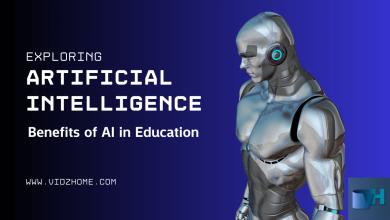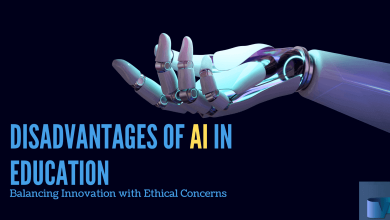
To understand Sublanguage in simple terms, you have to imagine language as a vast landscape with different territories representing various fields or communities.
Each territory has its own unique features, including the way people talk, the words they use, and the rules they follow.
Now, let’s focus on one specific territory within this linguistic landscape, which we’ll call a “sublanguage.”
Branches of Phonetics in Linguistics
Understanding Sublanguage in Simple Terms

Let us understand Sublanguage in Simple terms with the help of these examples tailored to make you understand Sublanguage better:
Specialized Territory:
Analogy: Think of sublanguage as a specialized neighborhood within the broader city of language.
Explanation: In linguistics, a sublanguage is like a language used by a specific group or community with shared interests or expertise. This community could be doctors, scientists, lawyers, or any group with a unique way of communicating.
Unique Vocabulary:
Analogy: Consider the unique words and terms in this neighborhood as its special landmarks.
Explanation: In a sublanguage, people have their own set of words and terms that might not be commonly used outside their community. These words help them express ideas more precisely within their field.
Specialized Grammar:
Analogy: Think of the grammatical rules as the guidelines for navigating the streets of this linguistic neighborhood.
Explanation: Just like each city neighborhood might have its own set of rules or ways of doing things, a sublanguage has specific grammatical structures and communication styles that are tailored to the needs of its community.
How Beneficial Cooperative Learning is in a Class? -IMP Research
Tailored Communication:
Analogy: Imagine the communication style within this linguistic neighborhood as a unique form of local art.
Explanation: People in the sublanguage community communicate in a way that makes sense to them. It’s like having a special way of painting or expressing ideas that is recognized and appreciated within their field.
Examples:
Analogy: Picture different sublanguages as different neighborhoods like the medical neighborhood, the scientific neighborhood, and the legal neighborhood.
Explanation: Doctors use a medical sublanguage with terms like “diagnosis” and “treatment plan,” while scientists have their sublanguage with terms related to their field. Each sublanguage serves the specific needs of its community.
- Sublanguage is like a specialized neighborhood within the city of language.
- It has its unique vocabulary, grammar, and communication style tailored to a specific field or community.
- Understanding sublanguage is like exploring and navigating the streets of a neighborhood to communicate effectively within that community.
Language Attitudes in Sociolinguistics (Factors Affecting)
What is Jargon and Register?
Jargon
Jargon refers to specialized terms or expressions used by a particular group or profession within a sublanguage.
Characteristics:
- Represents a subset of vocabulary within a sublanguage, consisting of technical or specialized terms.
- Often not easily understood by individuals outside of the specific group or profession.
- Facilitates efficient communication within the community using the jargon.
- Examples include programming jargon used in computer science or medical jargon used by healthcare professionals.
Register
Register refers to variations in language use based on factors such as context, purpose, audience, and social setting.
Characteristics:
- Encompasses differences in vocabulary, tone, and style to suit different social situations.
- Can range from formal to informal and is not limited to a specific field or community.
- Examples of different registers include the formal register used in academic writing, the informal register used in casual conversations, and the technical register used in manuals.
- Unlike sublanguage and jargon, register is a broader concept that extends beyond specialized fields.
Importance of Presentation Skills
A Comparison of Sublanguage, Jargon, and Register
Let’s compare sublanguage, jargon, and register in terms of key aspects
Scope and Application
Sublanguage: Broad and comprehensive specialized language used within a specific field or community.
Jargon: Subset of vocabulary within a sublanguage, consisting of specialized terms used by a particular group or profession.
Register: Encompasses variations in language based on context, purpose, audience, and social setting, and applies to a wide range of situations.
Content
Sublanguage: Involves unique vocabulary, grammar, and communication style tailored to the specific needs of a field.
Jargon: Represents technical or specialized terms within a sublanguage.
Register: Involves variations in vocabulary, tone, and style based on the social context, not limited to specialized terms.
Audience Understanding
Sublanguage: Generally requires expertise or familiarity with the specific field to fully understand.
Jargon: May be understood by individuals within the specific group or profession but can be challenging for those outside the group.
Register: Adjusts language to be appropriate and understandable for a particular audience, regardless of specialized knowledge.
Examples
Sublanguage: Medical sublanguage, legal sublanguage, scientific sublanguage.
Jargon: Programming jargon, medical jargon, legal jargon.
Register: Formal register, informal register, technical register.
Use in Communication
- Sublanguage: Used for precise and efficient communication within a specialized field.
- Jargon: Facilitates communication among professionals in a specific field.
- Register: Adapts language to suit the formality, tone, and style appropriate for a given context.
Versatility
- Sublanguage: Highly specialized and may not be easily transferable to other fields.
- Jargon: More transferable than sublanguage, but still context-specific.
- Register: Adaptable and applicable across different contexts, making it more versatile.
Top 9 Benefits of Training and Development (by Specialists)
Understanding Sublanguage, Jargon, and Register With EXAMPLES
Now is the time for the exploration of comprehensive examples of sublanguage, jargon, and register:
Sublanguage
Example: Medical Sublanguage
Vocabulary: Terms such as “diagnosis,” “symptoms,” and “treatment plan.”
Grammar: Specialized structures for conveying patient information accurately.
Communication Style: Precision is crucial; communication is tailored to the medical context.
Jargon:
Example: Programming Jargon
Vocabulary: Terms like “algorithm,” “variable,” and “debugging.”
Usage: Efficiently communicates complex coding concepts among programmers.
Specificity: Easily understood by programmers but might be confusing for non-programmers.
Register:
Example 1: Formal Register in Academic Writing
- Vocabulary: Utilizes formal and academic terms, avoiding colloquial language.
- Tone: Maintains an authoritative and objective tone.
- Usage: Suitable for research papers, essays, and scholarly articles.
Example 2: Informal Register in Casual Conversation
- Vocabulary: Relies on everyday language and colloquial expressions.
- Tone: Conversational and relaxed.
- Usage: Common in friendly conversations, informal emails, or social media interactions.
Example 3: Technical Register in Instruction Manuals
- Vocabulary: Includes technical terms and step-by-step instructions.
- Tone: Clear and straightforward.
- Usage: Designed for providing instructions in technical documents or manuals.
Change into Negative Sentence (without Changing Meaning)
Conclusion
These examples illustrate how sublanguage, jargon, and register operate in different contexts. The medical sublanguage is a comprehensive specialized language used in healthcare, programming jargon represents specific technical terms within the sublanguage of coding, and different registers adapt language for formal academic writing, informal conversations, and technical manuals.



